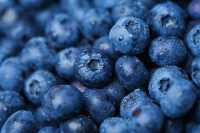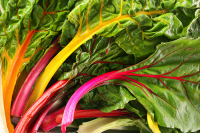The National Bureau of Labor Statistics estimates that the demand for registered dietitians will increase by 20 percent over the next decade. In particular, the demand for dietitians specializing in geriatric nutrition is expected to rise as the population ages, and the demand for dietitians in nursing homes and long-term care facilities increases. With new government health care policies focusing on disease prevention and wellness, dietitians will take on a larger role in the health care industry. Heart disease, diabetes and obesity-related health problems, which often are the results of poor nutrition, are leading causes of illness and premature death. The work of a dietitian is to prevent and reverse these conditions in patients through individually designed diet programs. The title of registered dietitian (RD) is conferred by the American Dietetic Association, and it is a nationally recognized professional title. Registered Dietitians must meet rigorous education and training requirements to qualify for the RD designation.
Dietician Job Description:
A registered dietitian assists individuals and communities in reaching nutritional goals through individual and group meal planning. The disabled, infirmed and those with special medical conditions depend on the expertise of a dietitian to develop healthful eating plans designed to meet their specific nutritional requirements.
Work Environment:
Dietitians may work in hospital settings or in outpatient clinics. School districts, and government programs, such as the preschool program Head Start, employ dietitians to develop menus for their breakfast and lunch programs. A dietitian may also work for a private medical practice or work as a self-employed consultant. Universities, businesses in the food industry, and pharmaceutical companies employ dietitians to perform research and assist in product development. Registered dietitians are also qualified to work as educators in the area of public health.
How to Become a Registered Dietician:
The minimum education requirement for the RD credential is a bachelor’s degree from an accredited college or university and successful completion of a nutrition program approved by the Accreditation Council for Education in Nutrition and Dietetics. A typical program includes coursework in human development, anatomy, physiology, biochemistry, microbiology, and social science in addition to menu planning and food science. RD Candidates must complete an internship, six-months to one-year in length, and successfully pass a national examination administered by the Academy of Nutrition and Dietetics credentialing agency. To maintain their credentials, registered dietitians must complete 75 hours of continuing education coursework every five years.
Registered Dietitian Salary:
Salaries for registered dietitians in the United States vary among geographic regions. For those with less than five years of experience, the national average annual salary in 2009 was between $51,100 and $62,200. Registered dietitians with more experience, and those employed in a supervisory capacity, can expect salaries in the mid- to- upper $80,000 range.
What is the Difference Between a Dietitian and a Nutritionist?
While all dietitians are nutritionists, not all nutritionists are dietitians. There is no national certification for a nutritionist; as a result, qualifications vary widely from state to state. Some states do offer a nutritionist certification, while some states do not regulate the title, and anyone can call himself or herself a nutritionist. While both occupations engage in diet and meal planning, a registered dietitian has a more complete knowledge of the science behind the nutrition.




 During the Easter season it’s practically impossible to find gifts that aren’t full of sugar and fat. From malted milk eggs to chocolate bunnies, it seems as if it has become the holiday of candy. However with a little creativity, there are several healthy alternatives for your Easter ideas. Rather than picking out a standard candy-filled basket at the store, consider giving the gift of a
During the Easter season it’s practically impossible to find gifts that aren’t full of sugar and fat. From malted milk eggs to chocolate bunnies, it seems as if it has become the holiday of candy. However with a little creativity, there are several healthy alternatives for your Easter ideas. Rather than picking out a standard candy-filled basket at the store, consider giving the gift of a